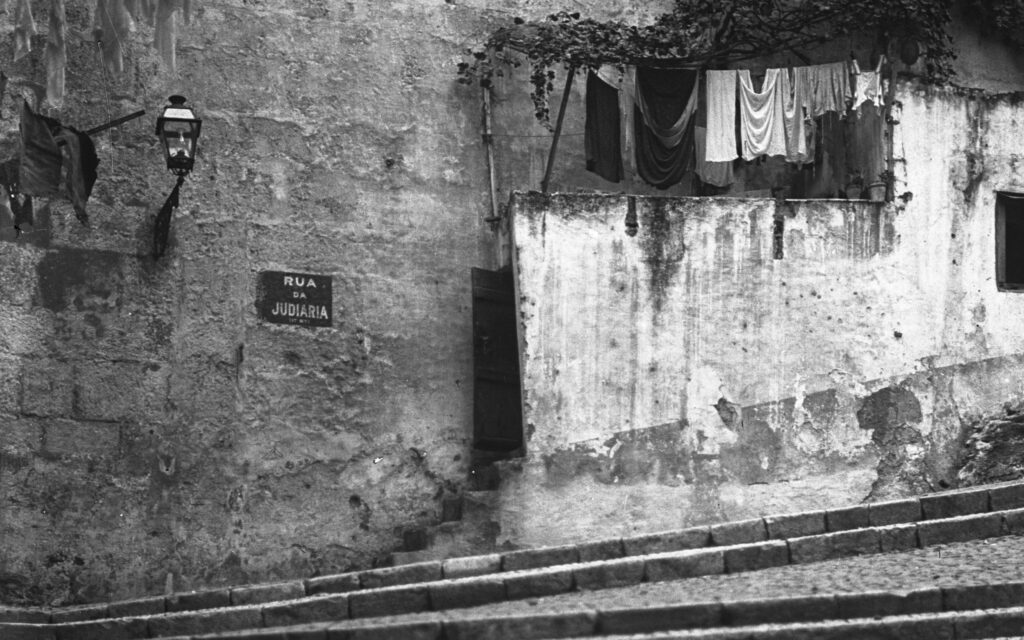History of Rua da Judiaria

The ‘Judiaria’ – the Jewish Street of Lisbon – is the last Jewish remaining site from the Middle Ages in Lisbon. After the Portuguese kingdom recaptured Lisbon in 1147, neighborhoods were established for Jews and Muslims. Between 1147 and 1497, there were four Jewish quarters, the Quarry Jewish Quarter (Judiaria da Pedreira), the Small Jewish Quarter (Judiaria Pequena), The Great Jewish Quarter (Grande Judiaria), and the Alfama Jewish Quarter (Judiaria de Alfama).
The Alfama Jewish Quarter was the last to be built in Lisbon, around 1373-1374.


The Alfama Jewish Quarter was the residence and workplace of many Jews, and also housed a synagogue, despite controversy.
After the expulsion of Jews and the forced conversion to Christianity of those who stayed in Portugal, these neighborhoods began to lose their characteristics. The synagogues were converted into churches, the Jewish houses were given to the Church and the nobles. Over time, the shape of the streets and their names were changed. In the case of Lisbon, the factor that most influenced the destruction of the Jewish quarters was the earthquake of 1755. During the city’s reconstruction after the earthquake, the Jewish quarters were completely modified to open wider streets and build larger buildings. The only surviving medieval historic site is the Rua da Judiaria, in Alfama. The other historic sites, date from the 19th and 20th centuries, many of them also did not survive due to a lack of historical awareness.
Images Rights – Municipal Archive of Lisbon – Photographic.
